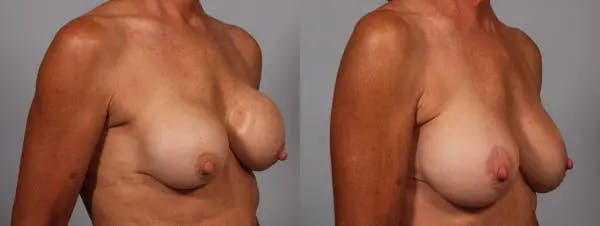Saline Implant Deflation, Capsular Contracture.
This 47-year-old had saline implants put in about 12 years before she returned with a right implant deflation and left capsular contracture. A contracture occurs when too much scar tissue forms around the implant, making it sit too high and feel hard.
47-year-old before corrective surgery
to six weeks following removal of old saline implants, with conversion to gel implants under the pectoral muscle by Dr. Duncan
View Additional Secondary Breast Implant Surgery Before & Afters click here.














